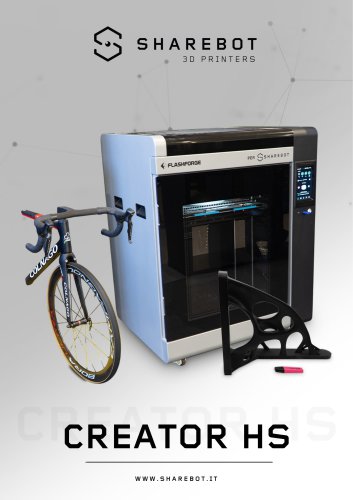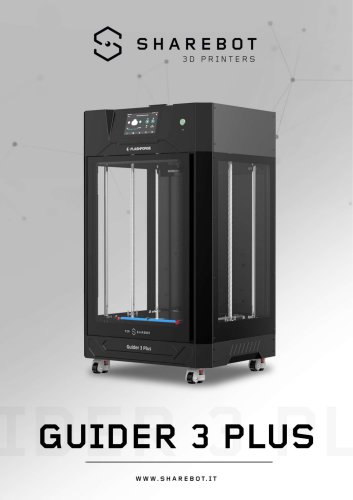
Catalog excerpts

Multifunctional materials for 3D printed customizable footwear D. Rigotti, G. Barp, A. Dorigato, L. Fambri, A. Pegoretti Università di Trento, Dip. Ingegneria Industriale via Sommarive, 9 - 38123 Trento, Italy Nowadays the research on performance in sport is becoming more and more significant, athletes are constantly searching for new challenges pushing further their own limits and the ones of their equipment. Materials and sport gears tailored on the single athlete are key points to express all the potential of the sportsman during the achievement of his goals. In winter sport footwear applications, like skiing, snowboarding, running and so on, cold temperature, vibration absorption and comfort are crucial aspects. 3D printable soft material able to absorb heat and then release it later, when needed, seems an innovative solution in this field. The aim of this study was to develop a novel rubbery material to produce customizable insoles for winter sports application with enhanced thermal properties given by the introduction of phase change material (PCM) through a Fused Deposition Modeling (FDM) 3D printer machine. MATERIAL PRODUCTION AND CHARACTERIZATION Different kinds of phase change materials (PCM) and processing techniques were taken in account to produce a material suitable to produce advanced insoles with additive manufacturing (AM) techniques. Good results were found in terms of processability and heat production by using a combination of thermoplastic polyurethane (TPU), already use in footwear applications, and microencapsulated paraffin with a crystallization peak temperature of 6°C (MPCM6D). TPU powder was mixed together with MPCM6D and with the aid of a single screw extruder, we could obtain filaments to feed our 3D printer machine. Dumbbell specimens were printed with a 3D printer provided by Sharebot. SEM observation shows a good adhesion between layers for all the different composition regardless the increasing amount of PCM inside the matrix. The shell of the PCMs microcapsules increase the stiffness of TPU as confirmed by tensile test and dynamic mechanical analysis (DMA). At room temperature the melted paraffin increase the damping effect of the material as proved by the shoulder in tan delta graph. Differential scanning calorimeter (DSC) shows an increase of the crystallization enthalpy with the increase of PCM and just a slightly decrease after each working step. Heating effect remains constant cycle after cycle as confirmed by DSC. 24 Infill density Rectangular infill FILAFLEX SAMPLES Bulk Sample Filament Printed Heat of Fusion Heat of Crystallization Cycle number (#) Normalized Heat of Crystallization (%) Filaflex Hexagonal FilaFlex Rectangular Hexagonal infill Compression Molded Filament 3D printed In order to understand how fill density and fill pattern affect the compression modulus, compression tests were carried out on 3D printed cylinders. Different commercial TPU filament were tested and used to produce samples with different densities and fill pattern. The measurements are carried out according to the ASTM D1621, standard test method for compressive properties of rigid cellular plastics. Cylinders of 3cm in diameter and 1cm in height, with infill densities of 10%, 25%, 50% and 75% and with rectilinear and hexagonal filling were printed and tested by using a Instron 5969 test machine. Fill Density (%) Filaflex filament was choosen as a preliminary experimental material due to similar values in stiffness compared to our filaments filled with PCM. Compression test on cylinder specimen was the starting point to design the infill of our insole. Not only the infill density plays a role in the mechanical properties of the printed materials but also the design of the infill. Rectangular infill was found to be softer than the hexagonal one due to the less contact point between the layers walls. OPEN SOURCE INSOLE DESIGN AND PRODUCTION The aim of this part of the work was to design a tailor-made insole for 3D printing with innovative and open-source devices. The idea was to create an insole that can compensate postural defects by distributing the weight of the body uniformly in each point of the foot. The first part was devoted to the acquisition of an image of the foot. A 3D reconstruction is possible by using 3D scanner that is a very useful tool but not easy to be found. The consequence is that possible scan of parts of the body can be very expensive that collides with the open-source intention of this work. A possible solution of this problem is to use a normal 2D scanner. The image of the foot was collected by the scanner and processed by using the GIMP, an open software for image manipulation. The image was vertically flipped, translated into a black and white picture and posterized. The posterization is used for the conversion of a continuous gradation of tone to several regions of fewer tones with abrupt changes from one tone to another. The next step was to reconstruct the 3D shape of the foot. This is possible by using OpenSCAD software with the command “surface” that assigns a height for each color gradation of the 2D picture. The 3D model needed to be smoothed before printing and it was done by using an Meshmixer a freeware software from Autodesk, the model was saved in a STL format and loaded to the slicing software. Slic3r is an open-source software develop by the RepRap community.This software is a non-profit project, is widespread and it is being used by tens thousands of people all over the world. Slic3r has an innovative tool that permits to create 3D printed objects with different densities and it was possible to print an insole with different mechanical properties. The insole was printed with a desktop 3D printer provided by Sharebot with our innovative filament. Main printing parameters were: • Nozzle temperature of 240°C • Nozzle diameter 0.35mm • Deposition rat
Open the catalog to page 1All Sharebot S.r.l. catalogs and technical brochures
-
SnowWhite2
2 Pages
-
metalONE
2 Pages
-
CREATOR HS
2 Pages
-
Guider 3 Plus
2 Pages
-
CREATOR_3_PRO
2 Pages






